Ensure smooth and safe sailing with essential sailboat equipment. This guide covers bilge pumps, anchoring and docking gear, basic instrumentation and electronics, additional useful gear, tools, and spare parts.
Let’s take a look on the sailboat equipment.
Bilge Pumps
A frightened sailor with a bucket is probably the most effective short-term answer to getting rid of unwanted water.
This is, however, extremely exhausting for long periods and a pump is a better approach. The intake hose can be routed to inaccessible low spots in the bilge. A good pump can be useful for everything from small amounts of bilge seepage to major leaks from hull damage. The most efficient pumps now available are diaphragm pumps. They handle large quantities of water with a reasonable effort, will pass small debris, and are easy to repair.
Pump intake hoses should be fitted with strum boxes (weighted strainers) to block large debris from the pump and to keep the intake down in the bilge. Discharge lines should be as short as possible, with no sharp turns. They should have an inner diameter at least as large as that of the pump outlet. This helps the pump to work closer to its designed capacity. The handle of at least one main pump should be operable through a watertight gland accessible to the helm and should be secured to avoid losing it in a knockdown.
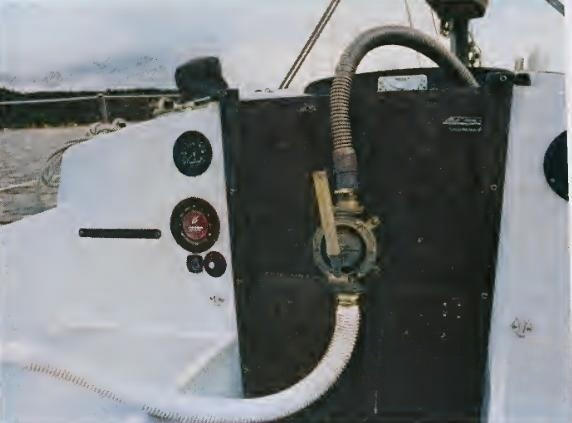
Small day sailers and dinghies should have a bucket or small bailing scoop and a sponge to get rid of water. At this boat size, a pump isn’t really necessary. Slightly larger boats should carry a larger bucket and a medium-size piston pump, which is portable and inexpensive, although not very efficient. Small keel boats should have at least one medium-size diaphragm pump of at least a 15-gallon-per-minute capacity.
Larger keel boats (twenty-seven feet and longer) should have at least one of the largest pumps that can be installed and a second pump as backup. The second pump can be more versatile if it is set up as a portable pump by mounting it on a spare companionway hatchboard. For an offshore boat, at least one pump should be operable Complete Guide to Below Deck Sailboat Systems: Ventilation, Marine Heads, Water Systems, and Morefrom belowdecks with all hatches shut.
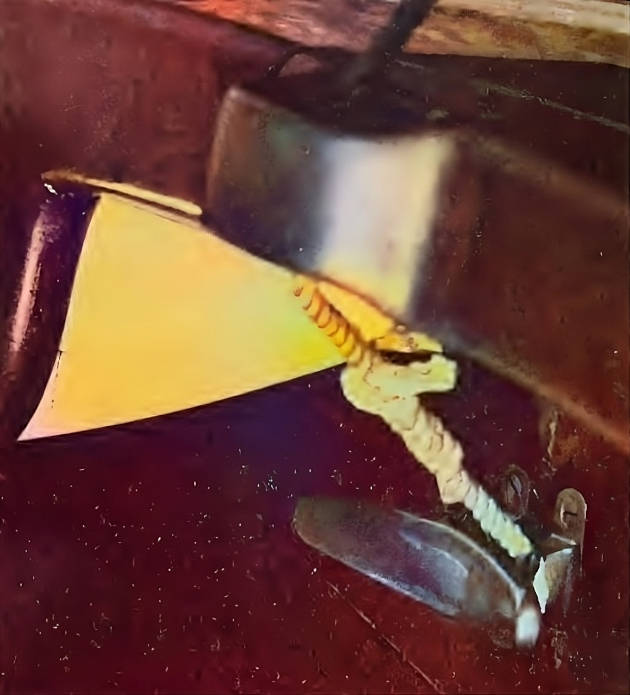
If space and money are available, an Self-Survey Criteria for the Engine and Electrical Systemsengine-driven high-capacity rotary pump makes a good insurance policy in the event of a major hull leak.
The engine water cooling pump, the sink pumps, and the head and holding tank pumps can also be adapted for emergency use. An electric bilge pump should never be the sole pump on a boat.
Anchoring and Docking Gear
The bow and stern cleats should be substantial fittings, through-bolted, with large backing plates. Bollards (bow or stern) and samson posts (bow only) are older, traditional substitutes for docking cleats. Bollards should be installed like cleats. Samson posts may require special installation if they are modern “imitations” that are not tied into the boat’s stem. Cleats amidships are useful to rig spring lines or secure dinghies.
Chocks should be large enough to accommodate the largest line aboard with chafing gear attached. The chock should have no sharp edges and any line passed through it should form a fair lead between the cleat and the mooring post or anchor. Poorly installed or manufactured chocks can destroy the best line in short order – a potential disaster.
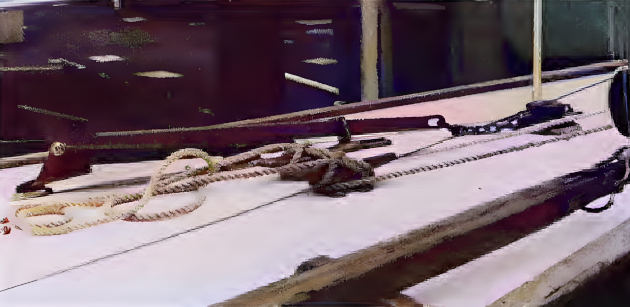
Short anchor pulpits with rollers make anchor handling much easier and are excellent places to stow anchors for coastal cruising. Preferably, the pulpit should have two rollers. Each roller should be at least three times the width of the largest rode to accommodate chafing gear and should be deeply grooved with guides to prevent the rode from jumping free. All edges should be beveled and the fairleads flared to prevent chafe.
A bow anchor locker is an even better solution to anchor stowage. It brings the weight of the anchor lower and closer amidships, where it will Boat Performance Factors Explained: Key Metrics and Analysis Guideaffect performance less and be less likely to come adrift in heavy weather. The locker should be large enough to store at least one working anchor, plus some chain and rode. It should drain overboard and have a substantial cover with through-bolted hinges and hasps.
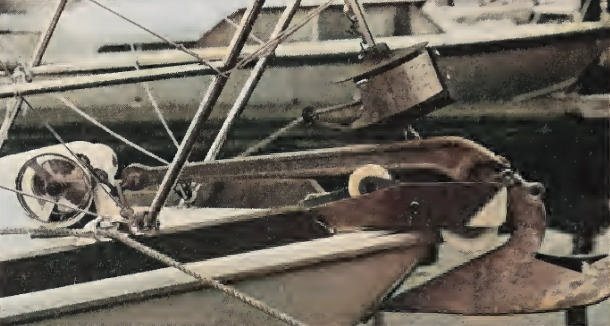
Although chain lockers typically drain into the bilge, an overboard drain is preferable. The drainage should not pass through any storage compartments. The locker should be well ventilated and have an eye or cleat for the bitter end of the rode. A metal cap typically tops off the chain pipe leading to the chain locker, although dorade vents are often used as a substitute chain pipe. The dorade vent can do double duty by letting in a good airflow. It can also be removed and sealed with a watertight screw-in cap for heavy weather. The top of a chain pipe located in an anchor locker should be raised above the locker’s floor to avoid flooding of a belowdecks chain locker.
Anchor windlasses are essential for heavy anchors, all chain rodes, or those of us with weak backs. They should be made of as few dissimilar metals as possible to prevent galvanic corrosion. The windlass should have two gypsies, one for nylon and one for chain. Electric windlasses should always have a manual override. Unfortunately, windlasses are expensive, heavy and real shin bangers on a foredeck. Except on heavy boats, they usually aren’t worth the costs until a boat approaches the mid-thirties LOA.
Basic Instrumentation and Electronics
You can spend a great deal of money on instruments and electronics to report information on your boat’s performance, the weather and sea conditions, to provide a communications link with the outside world, and even to time a soft-boiled egg. If you race seriously, good instrumentation helps keep you in the top competition. If you are a cruiser, it rates more as a convenience.
In my opinion, many instruments are unnecessary luxuries unless you have unlimited sailing dollars or are into serious racing. Electronic gadgets promoted by the boat equipment industry are expensive to buy and install. With even the best equipment and installation (often not the norm), maintenance will be a continuing problem, since salt, humidity, vibration, and other characteristics of the marine environment are very hard on electronics.
When you start with a new boat, put your energy and money into the essential basics of sails, Self-Survey Criteria for the Rigrigging, hull, and engine. Add the MINIMUM necessary instrumentation and electronic gear. Restrict it to what you know how to use, can repair or afford to have repaired or replaced, and know can be handled by your batteries and alternator (or generator on large boats).
When the basics have been installed, then consider adding those extra gauges, radios, and the like that may make sailing more fun and convenient. My suggestions for basic instrumentation and electronics, in order of importance, are a compass, a depth sounder, a VHF radio, and a knot meter with a log.
Read also: How to Choose the Perfect Sailboat: Tips on Selection, Ownership, and Alternatives
Buy the largest and best compass you can afford. The compass card should be easy to read and well damped. Since this is a vital piece of equipment, a second compass is a good idea. Two identical compasses can be bulkhead mounted on each side of the main companionway, providing easy viewing on either tack, as well as a backup. The compass should have a guard to protect it from damage and a hood to eliminate sun glare. A good handbearing compass is an essential item on any sailboat.

Select a good depth sounder with the deepest feasible range. An anchor alarm is an excellent addition to any depth sounder. A properly installed in-hull mounting is adequate for navigational purposes, though it will reduce the sounder’s range. A through-hull transducer provides better range but requires another hole in the hull and the transducer surface can be fouled. A flasher display is advantageous because it provides clues to the bottom consistency.
A marine band VHF radio provides a communications link to other boats and to the shoreside telephone system. More importantly, it gives you direct access to the Coast Guard in an emergency in most coastal waters. A 3 dB masthead antenna for the VHF radio will significantly improve reception and broadcast range.

Although a knot meter with a log may help improve sailing performance, its primary use is to determine distance traveled over the bottom for navigation calculations.
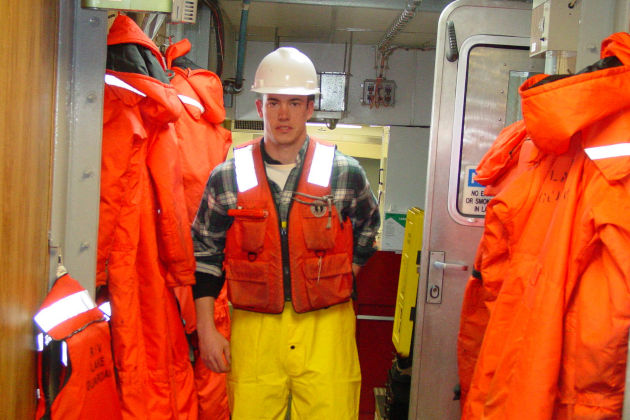
Source: wikipedia.org
Self-contained units that generate their own electricity for the display have an advantage in that, except for their night light, they are independent of the boat’s electrical system.
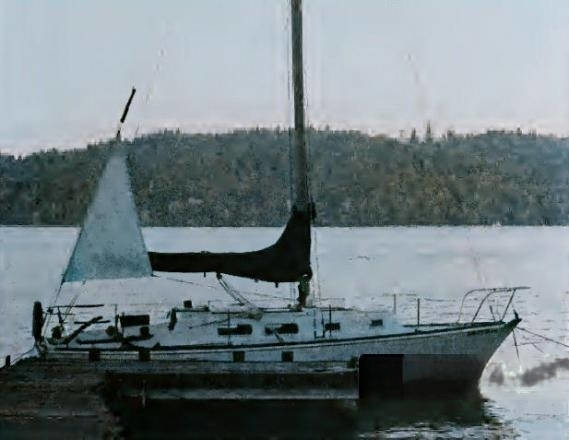
sloop or cutter keeps the boat weather-vaned into the wind at anchorages.
Depending on your sailing plans, you may also want to consider buying a medium or low-priced radio direction finder (RDF) or a Loran C (Long Range Navigation) receiver. An RDF is used to home in on a beacon or to determine coordinates.
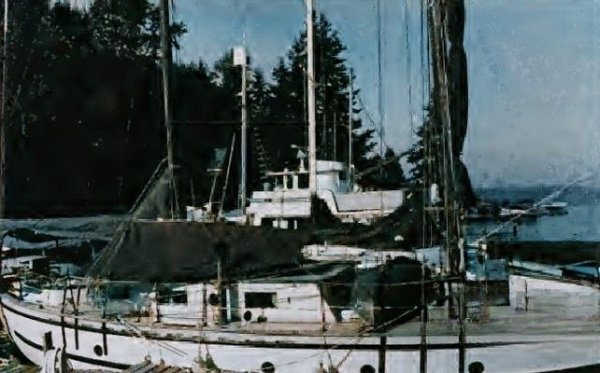
You must develop a deviation table if you intend to use it to determine position. Tremendous accuracy is possible in coastal navigation with a Loran C system, with a little practice and compensation for errors, and coverage of Loran is far superior to radio beacons.
A Loran C receiver is, however, a larger investment than an inexpensive RDF, although the costs of the high-priced RDFs and the low-priced Loran units currently overlap. Keep in mind that Loran, and maybe even RDF, will probably be replaced by a new satellite system called GPS in the early 1990’s.
Other Gear Worth Considering
Even the best built sailboat requires a variety of extra equipment to ensure safety, seaworthiness, comfort, and convenience.
The following represent a few of these extras that I consider important to boat safety, proper seamanship, convenience and comfort (this is where you will spend part of that 20 to 50 percent of base price for outfitting that I mentioned earlier):
- Extra fire extinguishers (at least double the Coast Guard required number). Extinguishers should be mounted throughout the boat, from the cockpit to the forecastle. You have to be your own fire department at sea. Boat fires are very serious because boats are extremely flammable and burns can be life-threatening without prompt and specialized treatment.
- Extensive inventory of flares and signaling devices (many times the minimum number required by the Coast Guard). Flares are cheap insurance in an emergency. It is not uncommon for only half of the flares stored on a boat to work, and a large number and variety of signaling devices may be necessary to get attention.
- Overboard pole (this can be made very inexpensively), horseshoe buoy, strobe light, whistle and drogue for use if anyone falls overboard plus Lifesling (a newly developed rescue device) if you can get one.
- Radar reflector to make you visible on the radar screen of that supertanker about to run you down.
- Two flag halyards, one for the radar reflector and another for courtesy and quarantine flags.
- Large first-aid kit that you know how to use.
- Swim ladder so you can easily get back aboard after swimming or in an overboard emergency.
- Safety harness with tether for each member of the crew. You might add a whistle, personal strobe light, and flares to each harness. Most owners will also want to run a jack line or wire from the cockpit to the bow for clipping on the harness tether.
- Pair of 7 × 50 binoculars.
- Minimum of two anchors (typical cruisers carry four or more). At least one should be a storm anchor. Refer to Chapman’s and to the manufacturer’s recommendations to determine storm anchor size. If in doubt as to the correct size, always go up one size. To sleep confidently at night in a crowded anchorage on a short scope rode, your “working anchor” should be as large as your storm anchor. The CQR Plow, the Danforth Hi-Tensil, and the Bruce are all fine modern anchors. Additional anchors to consider are a stern anchor (working anchor size), a second storm anchor, a dinghy anchor, and a grapnel. Rode diameters should be matched to the anchor. Again, Chapman’s can be used as a guide, and if in doubt go one size larger. A 3/8 inch line is the smallest that can be comfortably handled, but a V2 inch line is even easier to hold. The storm anchor rode should be about six hundred feet long and the working anchor rode three hundred to four hundred feet long. Use at least double the length of chain recommended by Chapman’s and select a chain diameter one size larger to accommodate the next larger size shackle, the weakest link in your anchoring system. Experienced cruisers generally use a minimum of four to six fathoms of chain.
- Anchor sail. This small sail can help hold your bow into the wind when heaving to or when in an anchorage where the current and wind are moving in different directions.
- Dinghy, to row ashore when you anchor out, to set an extra anchor, to explore, to fish, to set crab traps, and in an emergency to abandon ship. The ideal sailboat would carry both an inflatable with a small outboard motor and a hard rowing/sailing dinghy.
- Four nylon mooring/dock lines. At least two of these should be 150 percent of the boat’s length. To go through locks, you may have to meet other minimum requirements. For example, the Ballard Locks in Seattle requires two fifty-foot lines with loops in one end.
- The longest boat hook that will fit on the boat, to pick up a mooring or retrieve a cushion or dinghy painter.
- Six of the largest fenders that will fit in your lockers and at least one fender board. If you can find a place for them, two of the fenders should be the large, round buoy type.
- Boatswain’s chair for going up the mast.
- Tiller extension for steering from the rail.
- Soft dodger over the main companionway or cockpit. I feel that this is a required piece of equipment in the higher latitudes, especially for early- and late-season sailing. A dodger keeps spray and rain from below and gives to the crew and helmsperson protection from the wind, spray, waves, and rain. On sunny days, it offers some shade both at anchor and under way. A soft dodger can be folded down in nice weather to increase cockpit visibility and airflow. It can be stowed below in extreme weather to reduce windage and avoid tearing and ripping. A good, soft dodger is a cheaper and more versatile alternative to a hard dodger, doghouse or pilothouse. When evaluating a dodger, make sure it will fit under the main boom when sailing with the outhaul loose, halyard slacked, or down- haul tensioned. Visibility should be adequate, there should be good access to the side decks, and the winch handles must clear it when they are turned.
- Weather shields. These make the cockpit much cozier when running or reaching downwind and when at anchor, particularly during the cooler months.
- Awning or boom tent to offer protection from sun and rain. This can be a simple or a custom-designed solution to weather protection. It does not, however, work very well when sailing.
- Foul-weather gear and high rubber boots, with layers of warm wool or synthetic clothing for off-season sailing.
- Pressure kerosene lantern. These put out a great deal of light (equivalent to a 200- to 250 watt bulb) and some heat, without draining the batteries.
- Portable shower, for bathing on the dock or down below.
- Good set of tools and spare parts to fix all your supposedly “trouble-free” equipment (see following section).
Tools and Spare Parts
Every boat should carry tools and spare parts for emergency and permanent repairs. Even the highest quality and best maintained boat will occasionally need repairs away from the dock. The more complicated the boat and the more equipment there is on it, the more likely it is that repairs will be required unless the boat rarely leaves its moorage or is never sailed hard.
There aren’t marine service stations on every point or island, and the Coast Guard is supposed to be a rescue service, not a boat-towing and repair company. Broken gear at sea can be serious, and you should be prepared for maximum self-sufficiency, consistent with your level of sailing.
A small day sailer with an outboard motor that is used exclusively for day sails on a freshwater lake doesn’t need one hundred pounds of tools and parts. It should, however, carry a few basics, such as:
- spark-plug wrench,
- screwdriver,
- pliers,
- crescent wrench,
- propeller cotter pins,
- round cotter pins for rigging,
- light line,
- wire,
- tape,
- and a set of spark plugs.
At the other extreme, an offshore cruising keelboat might carry hundreds of pounds of tools and spare parts, including such “necessities” as a spare alternator, starting motor and water pump, an extra backstay, spare halyards, blocks, and so forth. A permanent workbench might even be installed to facilitate onboard repairs.
The coastal cruiser is between these two extremes. It needs to be prepared for routine maintenance under way, and for many of the same emergency repairs an offshore boat might require. Critical problems must be handled immediately. You won’t always be near a boatyard when the engine quits, the mast falls down, or the hull starts leaking. Although small problems might not initially threaten the boat’s integrity or your safety, they can be a serious inconvenience that can ruin a vacation cruise.
Boatyards and marinas may not have the parts or skilled labor that you need, and if they do, you may have to wait in line for service during the peak sailing season. Solving your boat’s problems and learning additional skills is satisfying and will be useful if you move to a larger boat or take more adventuresome trips to remote places.
Below you will find a suggested “starter” list of tools and spare parts for a coastal cruiser.
Starter List of Tools and Spare Parts
| Tools | Spare parts |
| Crescent wrench | Extra engine and transmission oil |
| Set of metric and English box wrenches | Light and heavy oils (such as LPS 1 and 3), petroleum jelly, rudder and shaft grease |
| Set of metric and English hollow-key or hex wrenches | Spare fuel filters |
| Set of socket wrenches with English and metric sockets: 1/2 inch, 3/8 inch, and 1/4 inch drives and a variety of extensions, adapters, and universal joints | Spare oil filters |
| Pliers: blunt, tapered, and needle-nosed | Fuel additives |
| Variety of Phillips, Prince Head, and slot screwdrivers | Spare injectors and glo plugs for a diesel; spark plugs, condenser, points, distributor cap, rotor, and distributor wires for a gas engine |
| Visegrips wrench(es) | Spare belts |
| Steel and rubber hammers | Tape and wire |
| Nicopress tools | Electric wire and connectors of assorted sizes |
| C-clamps | Spare bulbs, fuses, and dry cells for all equipment |
| Hand drill and bits | Spare fasteners, washers, and gaskets of various sizes |
| Bolt cutters, large enough for the heaviest standing rigging on board | Wire clamps and hose clamps |
| Hacksaw and spare blades | Thimbles for wire and rope |
| Set of miniature pliers, screwdriver, and electrical wrenches | Shackles |
| Basic tap and die set | Cotter pins of all sizes |
| Wire cutter/stripping/crimping tool | Regulator |
| Chisel and punch | Spare water impellers for engine water pump |
| Wood and metal files | Spare diaphragms, valves, and gaskets for all other pumps, including the marine head |
| Pry and crowbars | Spare water and fuel hose in several sizes, plus hose fittings |
| Ax | Sail repair kit, including: sail cloth and sail tape, battens, sail palm, waxed and unwaxed thread, assorted needles, hanks, slides, grommets, grommet tool, and fids for braided line |
| Inspection mirror | Emergency or spare radio antenna |
| Extension fingers to retrieve lost items from the bilge | Spare radar reflector |
| Small vise on a 2×12 or larger plank | Backup battery or kerosene running and anchor lights |
| Knife and fid | Epoxies, glues, gasket compound, sealing compound, and Teflon tape |
| Plumber’s Helper/Friend | Small pieces of lumber, including 4’×8′ sheet of 1/4-inch plywood and sheet metal screws for patching hull |
| Small brushes | Bearings, springs, pawls, snap rings, and grease for all winches |
The list can be modified according to your skills, the type and size of boat, and how far away from civilization you plan to be. Day sailers may also find some ideas in this list, though they will want to pare it extensively. The offshore sailor and those going overseas will find that this is a good starting point, although many more items should be added, including all spares difficult to obtain overseas or essential to a safe and enjoyable trip. Of course, any purchase of tools and spare parts will be limited by your budget and the available storage space on the boat.

